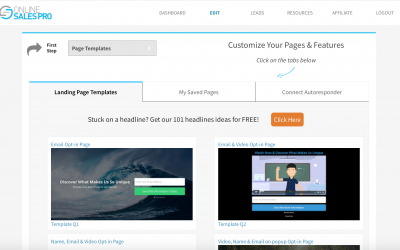Email marketing is often touted as the fastest way to make money online, but too many marketers find themselves struggling to get sales. You may have followed every technique you’ve read about, but if you’re not seeing consistent sales, something is wrong.
Here are some of the most common mistakes made in email marketing:
1. You Don’t Understand Their Needs
The best email marketing copy in the world won’t get people to buy if they don’t need what you’re selling. Remember that people will invest in something that stops their pain. Find their pain point and present a solution and you’ll get sales. However, if you’re trying to sell something that they don’t need, you won’t see many, if any, sales.
Do your research and make sure you’re solving their problem, one they actually have and not one you assume they have.
2. Your Content Isn’t Interesting
Ouch. This isn’t something anyone wants to hear, but it could be the truth. If your email content is dull, no one will even bother opening your emails, much less read them.
Think about your own inbox. Which emails do you always open? There are likely a few specific marketers that you’ll always read and are more likely to buy from. What’s different about their emails? They likely offer good value and are interesting enough that you want to read the emails. Do the same with your own and you should see your conversion rates rise.
3. You Don’t Have Their Trust
Are all your emails offering special deals and nothing of actual value? This could be the problem. People don’t buy from people they don’t trust and ads do very little to gain their confidence.
Often, subscribers open an email only to see that it’s full of ads or just a sales pitch. While these types of emails do convert and can be used to gain more customers, you need to do it the right way. Offering some value in your emails is the best way to build trust. Once your readers trust you, they’ll be far more likely to buy.
4. Your List Isn’t Your Audience
At this point in your business, you should know exactly who your target market is. Now take a look at the people on your email list. Are they in your target market? It can take some tweaking to get your campaigns to the point where they attract exactly the right person. Often, the issue is in the lead magnet. Take a second look at yours to ensure that it’s what your target market wants and needs.
5. You Need Better Subject Lines
When your email arrives in your subscribers’ inboxes, it’s the headlines that grab their attention. Not only do these determine your open rate, but it also determines the attitude with which the email is opened.
Blaring, spammy subject lines set the mood before your potential client even opens the email. It can make them resistant even before they read what you have to say. If someone is resistant before opening the email, you’re probably not going to get the sale without a seriously impressive sales technique.
6. You’re Not Segmenting Your List
Still sending out generic emails to your entire list? There are many reasons this is a terrible idea, but the number one issue is the fact that people joined your list for different reasons. Someone who signed up to learn marketing techniques for small business is not going to be interested in the same things as someone looking to grow their corporate business.
All autoresponders worth their salt have the option to segment your lists according to interests or activity. Someone who has already bought from you is far more likely to buy again in the future, so they need to receive tailored emails that will help them make the decision to purchase again. Those who haven’t bought will require different techniques.
7. You Aren’t Consistent with Your Emails
Consistency is key when you’re managing an email list. Wait too long between emails and they’ll forget about you. Send too many emails close together and they’ll unsubscribe. Sending out emails on a regular basis, so your readers know what to expect is the best way to maintain contact and build trust.
Consistency doesn’t just refer to email frequency, though. It also refers to the content of your emails. If you have sent out all useful messages for weeks and abruptly change to ads and sales pitches, people will become confused and less likely to buy. That’s not to say you shouldn’t sell, but do it in a way that is consistent with your brand.
Which of these email marketing mistakes are you making? It’s never too late to improve.




